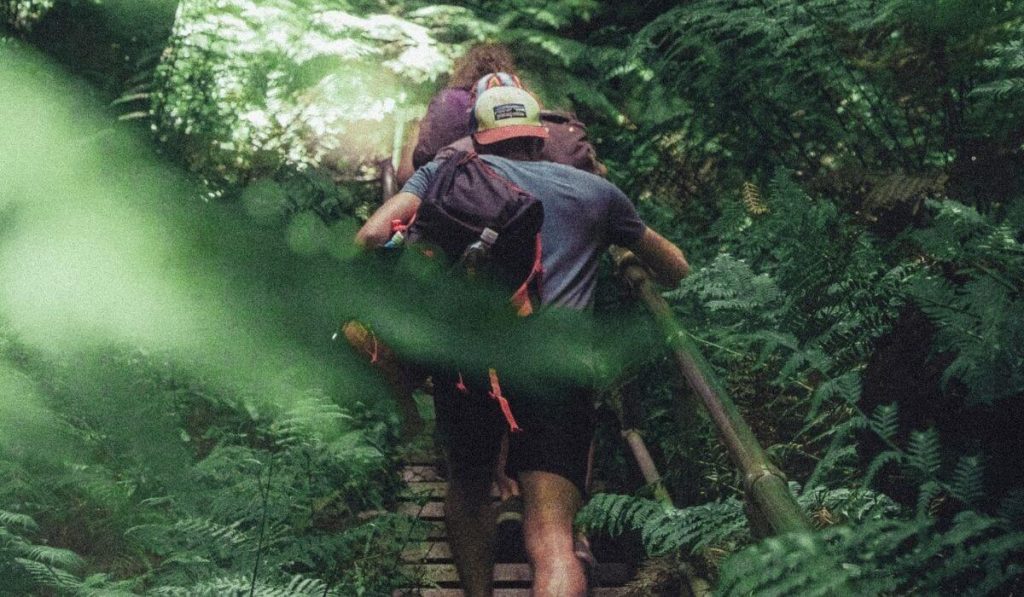![]() Hiking is popular like never before. But when you go on a hike, it is important to have remembered it all, as it is annoying to find out that you are missing some essential equipment when you go on the elements. That is why we have made this packing list for the hike, so you remember all your equipment for the trip.
Hiking is popular like never before. But when you go on a hike, it is important to have remembered it all, as it is annoying to find out that you are missing some essential equipment when you go on the elements. That is why we have made this packing list for the hike, so you remember all your equipment for the trip.![]()
When you need to find out what packing and equipment you need to take with you on the hike, you need to think about how far you have to go, what terrain you will encounter and the weather conditions.
Remember that this hiking package list is indicative, and will vary from trip to trip – and in relation to your level of experience. In addition, it is important to remember that all equipment you bring with you must be carried around on the pack, so do not pack anything that is unnecessary. If you are a beginner in hiking, you are recommended to read our guide to hiking for beginners here .
Hiking package list
Equipment packing list for hiking:
- Hiking backpack or daypack
- Hiking boots or hiking shoes
- Plenty of food and water
- Practical clothing (Moisture / sweat transporting)
- Gear to navigate (map, gps, compass)
- First aid kit
- Knives or multi-tools
Package list hiking with accommodation on the trip:
- Sleeping bag
- Sleeping pad
- I could
- Possibly. sheet bag (fleece if it is cold)
- Quick-drying towel
- Headlamp
- Mosquito net
- Toiletries
Hiking backpack
Your backpack becomes your friend on the hike and is important for your experience. On day hikes, a daypack backpack is recommended which holds anything from 5 to 40 liters. The smaller backpacks can hold the most necessary on short hikes, while the large backpacks can hold more equipment, meals, gear, etc., where hiking backpacks typically have a size of 60-70 liters.
Clothing and footwear
When it comes to your attire, it is important to keep an eye on the weather conditions. Feel free to pack extra clothes if the weather is changeable. Your body needs to breathe and get rid of the heat when you are active. Therefore, wear practical clothes that are moisture and sweat transporting.
Your footwear must be suitable for the distance you have to walk and the terrain you are exposed to. On hikes with flat terrain, hiking shoes will be a safe choice, while for challenging and hilly terrain it will be good with hiking boots. In addition, it will be well spent to acquire a pair of hiking socks , which have many beneficial properties.

Food and drink on the hike
It is important to have plenty of food with you as your body needs lots of energy. Your body needs to be well hydrated when you hike. Therefore bring small things such as energy or muesli bars as well as other snacks with you during the trip. In addition, you can bring food for lunch and food for the evening if you have to spend the night in nature. Here it will be a good idea to bring a storm kitchen that can cook and drink in any environment. Also bring knives or multi-tools . These can help with the cooking, but also other challenges you may face on the trip.
When it comes to liquids, it is recommended to bring 2 liters of water per. person. Remember that the need for fluids depends on the length of the trip, challenges, body type and hydration. Feel free to equip yourself with a water bottle that can keep the water cold all day or a backpack that has room for a water system. If you are in an environment without access to clean drinking water, you can solve this problem with a water filtration system .
Equipment for navigation
You can quickly get secluded on the hike, where you will need to find out about your location. Therefore, it would be wise to have some kind of gear that can navigate. This can be phone, gps, a map or compass.
First aid kit
The accident can hit during the trip, and hopefully to a lesser extent. Here it will be practical with a first aid kit so you can treat minor injuries on the trip. If you get blisters easily, you can also bring blister patches so you can complete the trip.
Accommodation on the hike
There are many opportunities to spend the night in nature, and it is a great experience to fall asleep to the roar of the sea or in cozy valleys and forests. If this is the case on your trip, it is recommended to bring a sleeping bag , sleeping pad , pillow and possibly a sheet bag for extra warmth. In addition, it can be practical with a headlamp and mosquito net which can keep mosquitoes and insects away. In addition, toiletries will also be needed so that you can maintain good hygiene.




